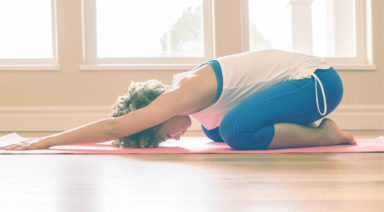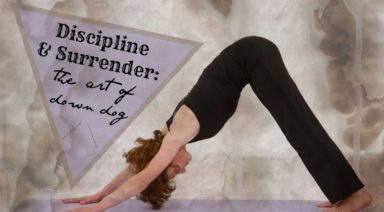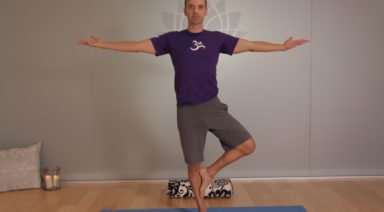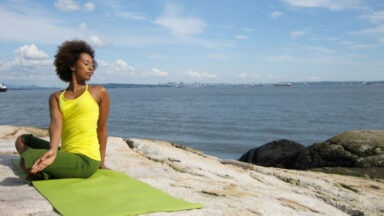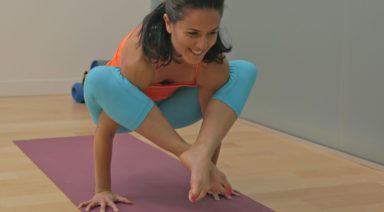Balasana: Child’s Pose

Balasana (bah-LAHS-ah-nah) is a gentle resting pose that stretches the low back, hips, thighs, knees, and ankles while inviting release of stress and tension. Balasana’s dome shape provides an opportunity to refocus and focus on yourself.
Sanskrit:
- Bala: child
- Asana: pose
Physical Benefits:
- Gently stretches the low back, hips, thighs, knees, and ankles.
- Relaxes the spine, shoulders, and neck.
- Increases blood circulation to your head, which may relieve headaches.
Energetic Benefits:
- Calms the mind and central nervous system.
- Relieves stress, fatigue, and tension.
Preparatory Poses:
- Tabletop pose
- Cat pose
Sequential Poses:
- Puppy dog pose | Anahatasana
- Seated forward fold | Paschimottanasana
- Hero’s pose | Virasana
Counter Poses:
- Cow pose
- Sphinx pose | Salamba bhujangasana
Adjustments/Modifications:
- Place your forehead on your fist or a cushion if your head does not easily rest on the floor.
- If your knees are uncomfortable, place a cushion between your hips and your heels for support.
- If your ankles or feet are uncomfortable, place a thin cushion or rolled up towel under your ankles.
Step-By-Step:
- Start in a tabletop shape, on your hands and knees.
- Release the tops of your feet to the floor and bring your knees wider than your hips, big toes touching.
- Slowly lower your hips towards your heels.
- Walk your hands forward and rest your head on the floor or a prop.
- Take several slow breaths into your belly and chest.
- Gently release back to tabletop.
###Legal Disclaimer Before participating in any exercise program or using any fitness products or services that may be described and/or made accessible in or through the Gaia Website and/or the Services, you should consult with a physician or other healthcare provider. Read more about Gaia’s Terms Of Use.
Prasarita Padottanasana: Standing Wide-Legged Forward Bend Pose

ADJUSTMENTS | BENEFITS | SEQUENCING | SANSKRIT | STEPS
Prasarita padottanasana (pra-sa-REE-tah pah-doh-tahn-AHS-an-uh) is a big stretch for the hamstrings and inner leg line. With many variations available, this pose is accessible for most practitioners. This is also a great pose in lieu of headstand.
Philosophy + Origin
Prasarita padottanasana has found its way into almost every style of yoga. B.K.S. Iyengar taught several variations of this posture, labeling them as A, B, C, and D. The most commonly practiced variation is prasarita padottanasana A. Prasarita padottanasana B is when the hands are on the hips and the head is lifted off the ground, not resting on the mat. Prasarita padottanasana C is the variation where the hands are interlaced and stretched behind the back and over the head as you fold. In the final variation taught by Iyengar, prasarita padottanasana D asks the student to grasp the big toe on each foot.






